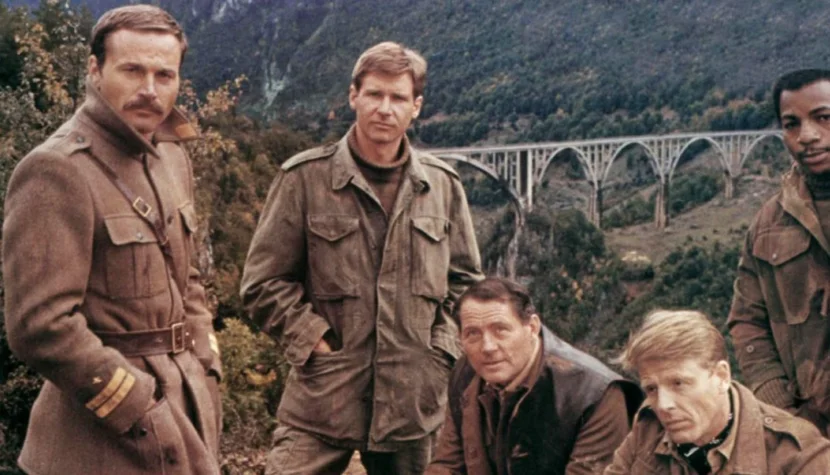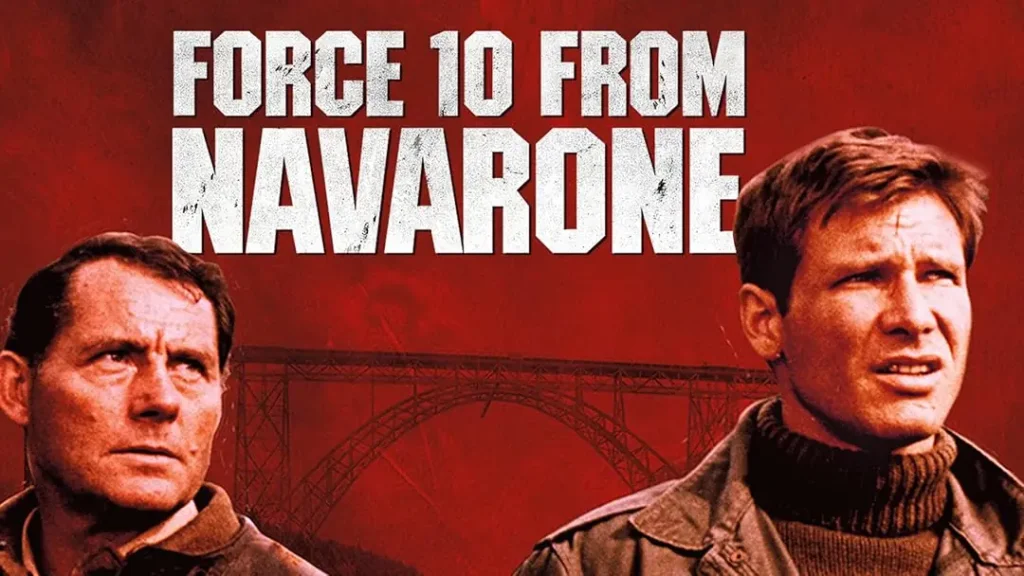FORCE 10 FROM NAVARONE. Closer to adventure cinema than war cinema

Sequels Made Long After the Original Are Not a New Hollywood Invention. In recent years, producers in the dream factory have been acting as if they suddenly discovered that nostalgia is a powerful (and highly lucrative) force and are exploiting it to the fullest. However, the old truth that if something sells well, you need to quickly deliver more of it, has been around for a long time. So when The Guns of Navarone, directed by J. Lee Thompson and featuring a star-studded cast, triumphantly swept through theaters in 1961, the idea of making a sequel about the main characters’ further adventures emerged just a few years later. Although Alistair MacLean, whose book was the basis for the first film, didn’t have a sequel in his portfolio, he quickly drafted an outline, which screenwriters could adapt into a workable script. However, financing problems stalled the production. By the time those issues were resolved, the original actors—Gregory Peck, David Niven, and Anthony Quinn—had aged too much to reprise their roles. The decision was made to recast, and production kicked into high gear. The completed film hit theaters… seventeen years after the first installment.

Within just a few minutes of watching Force 10 from Navarone, it becomes clear that it leans much closer to adventure cinema than to a realistic wartime epic. Unlike its predecessor, which carried a more serious and epic tone, this film adopts a lighter, more playful approach, framed by the conventions typical of such spectacles from the era. This is far from the era of Saving Private Ryan, where Spielberg depicted war with almost journalistic precision, showing soldiers’ bloody, brutally naturalistic struggles on the front lines. Here, the commandos’ desperate mission behind enemy lines feels more like an adventure undertaken by a group of guys deciding to play at war. Yes, there are casualties, but only side characters and villains meet their demise, while the main heroes are protected by what the English-speaking world calls “plot armor”—the idea that nothing can happen to protagonists. This sense of invincibility is further emphasized by Ron Goodwin’s light, occasionally even playful, score, led by a fantastic heroic main theme. Why don’t they compose such memorable melodies anymore?
Replacing actors like Gregory Peck or David Niven might seem like an impossible task, but Robert Shaw (stepping into Peck’s role) and Edward Fox (replacing Niven as Miller) carry the torch admirably. Shaw, for whom this was one of his final roles—he passed away before the film’s premiere—along with Fox, embodies two typically English stoics who remain composed even in the worst predicaments. They manage to deliver ironic remarks or sharp retorts, maintaining their cool throughout. The opening dialogue quoted in the original text comes from a scene in which the duo, disguised as German officers, break into an armory to steal explosives. Despite the tension, they never lose their calm or stoic humor. Is it realistic? Absolutely not. Is it enjoyable to watch? Definitely! Moreover, Shaw and Fox are supported by a stellar cast that includes Harrison Ford (in his first role after Star Wars), Carl Weathers, and Franco Nero, as well as Bond franchise stars Barbara Bach and the towering Richard Kiel. The film itself was directed by Guy Hamilton, a veteran of the Bond series.

The movie was filmed in Europe, including locations in the former Yugoslavia, where President Tito visited the set. Tito even agreed to lend tanks to the filmmakers, which is why the German forces in the movie are equipped with Soviet T-34 tanks (the same kind used by the titular heroes in Four Tank-Men and a Dog). My favorite anecdote from the production is that the filmmakers originally planned to shoot in Pakistan—until someone realized that Pakistanis didn’t exactly resemble Yugoslavians or Germans, and the cost of makeup to address this would have been exorbitant (seriously!).
All in all, for a movie made so many years after the original, with an entirely new cast and numerous production hurdles, Force 10 from Navarone is a fairly decent adventure film set against the backdrop of World War II. It’s by no means a masterpiece, but it delivers an enjoyable experience—occasionally a bit naïve but undeniably charming. With its star-studded cast, scenic locations, and catchy music, it’s a fun ride. For some lighthearted escapism, it’s worth joining the mission behind enemy lines that seems impossible to complete.

